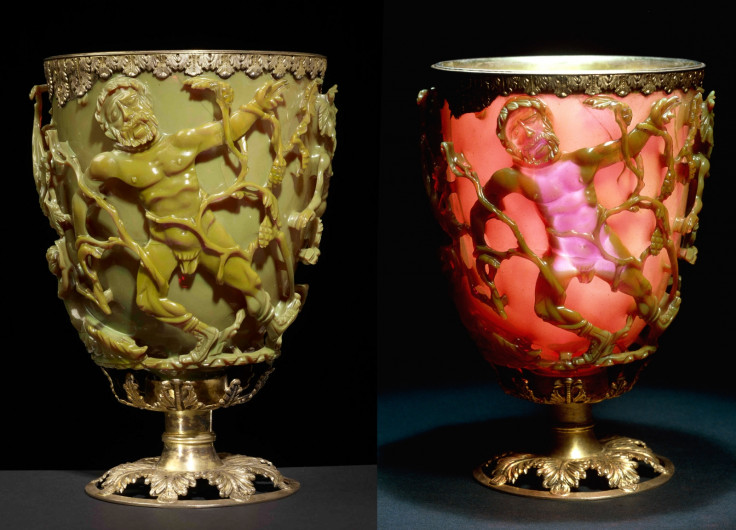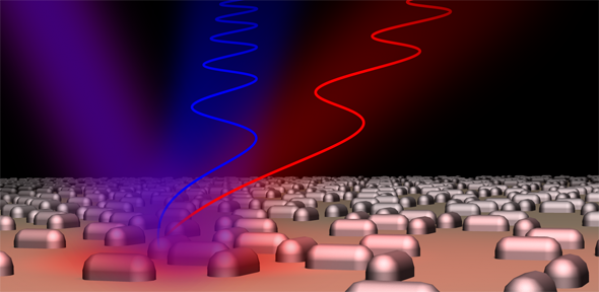Romans Used Nanotechnology to Turn Lycurgus Cup From Green to Red 1,600 Years Ago

Cambridge University researchers have succeeded in mimicking nanotechnology used by ancient Romans to make a 4<sup>th century AD glass cage chalice change colour in different lights. Using the same process, they have made a breakthrough that could greatly increase the storage capabilities of today's optical devices.
The Lycurgus Cup, on show at the British Museum, is 1,600 years old and highly prized for its depiction of a scene from the myth of Lycurgus, with the figures from the tale cut out and standing in high relief against a thick glass blank on the vessel.
In addition to the intricate details, the cup is also made out of dichroic, a special type of glass that changes colour when held up to the light. Usually coloured jade green, the cup turns a translucent red when light is shone through it, due to the interaction of light with metallic nanoparticles.
Scientists have figured out over the last 20 years that the interference produced by the interaction between light and nanoparticles can create holograms that go far beyond the usual limits of diffraction, whereby light waves bend or spread when encountering an obstacle or opening.
Grounding silver and gold into nanoparticles
In order to produce the dichroic effect on the chalice, Roman artisans are believed to have ground down particles of gold and silver to 50 nanometres in diameter, which is less than one-thousandth the size of a grain of table salt, and then laid these nanoparticles within the glass before it set.
When metals are the size of nanoparticles, they are able to display iridescent colours, which is what causes the colour to change in the Lycurgus Cup.

While there continue to be scientific debates about whether the Romans discovered nanotechnology by accident or whether they deliberately calculated the size and quantity of nanoparticles required to make dichroic glass, no one has been able to replicate the effect, until now.
The researchers created nanoscale metallic nanoparticle arrays from a thin layer of silver that mimic the dichroic colour effect of the Roman chalice to create multicoloured holograms containing 16 million nanoparticles per square millimetre.
Each nanoparticle scatters light into numerous colours depending on its size and shape, and the light, when put together, produces an image.
Their research, entitled Plasmonic Nanoparticle Scattering For Color Holograms is published in the Proceedings of the National Academy of Sciences (PNAS) journal.
Nanoparticle reactions could have wide applications
"This technology will lead to a new range of applications in the area of photonics, as conventional optical components simply cannot achieve this kind of functionality," said Yunuen Montelongo, a PhD student from the Department of Engineering at Cambridge University, who led the research.
"The potential of this technology will be realised when they are mass produced and integrated into the next generation of ultra-thin consumer electronics."
The researchers are now exploring the various optical mechanisms required in a light-matter interaction at nanoscale and are looking to construct three-dimensional dynamic displays for consumer electronics using the technology.
"This hologram may find a wide range of applications in the area of displays, optical data storage, and sensors," said PhD student Calum Williams, a co-author of the paper.
"However, scalable approaches are needed to fulfil the potential of this technology."
© Copyright IBTimes 2025. All rights reserved.






















